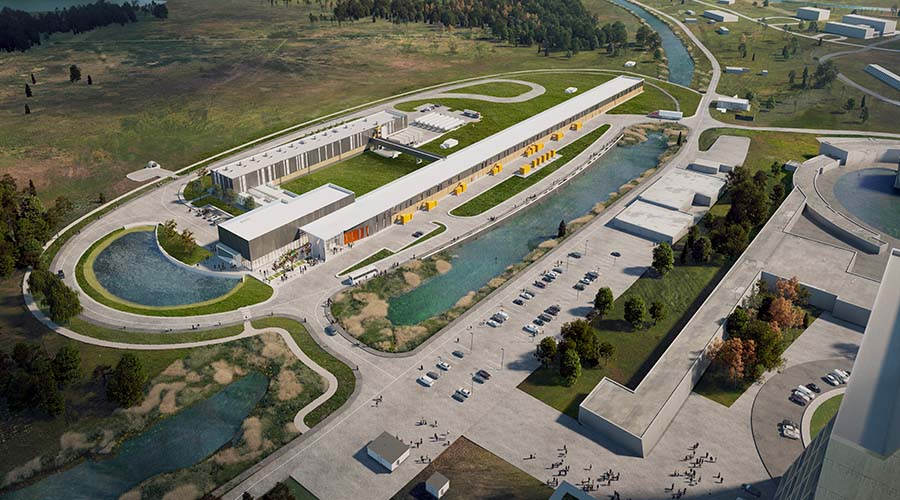 The final phase of the Proton Improvement Plan-II (PIP-II), the upgrade of the Fermilab accelerator complex, kicks off. Fermilab is the main US centre for particle physics, in Batavia, Illinois. The Department of Energy (DOE) of the United States has, in fact, formally approved the start of works envisaged by the PIP-II, including a new superconducting linear accelerator of 215 metres (LINAC) that will produce the high-energy neutrino beam for DUNE (the Deep Underground Neutrino Experiment), in which INFN is also taking part. The decree of the DOE is only the final step of the PIP-II project, which reaches the end of a long period of planning and technological development, during which innovative superconducting solutions, that will be adopted by LINAC, were identified and produced. The LINAC will be able to reach energies 60% higher than current ones and modulate the production of proton beams according to the needs of individual experiments. INFN is also collaborating in this undertaking thanks to its recognised expertise in the field of accelerator technologies. The Laboratory for Accelerators and Applied Superconductivity (LASA) of INFN together with the University of Milan will be in charge of producing the resonant niobium cavities needed to provide energy to the PIP-II proton beams. The experiment will consist of two underground detectors placed 1,300 kilometres apart, which will have the task of identifying the features of neutrinos and their transformations on their way from Fermilab to the Sanford Underground Research Facilities in South Dakota. In this case too, the experiment will rely on the contribution of INFN, which already has 80 researchers engaged in constructing the two detectors.
The final phase of the Proton Improvement Plan-II (PIP-II), the upgrade of the Fermilab accelerator complex, kicks off. Fermilab is the main US centre for particle physics, in Batavia, Illinois. The Department of Energy (DOE) of the United States has, in fact, formally approved the start of works envisaged by the PIP-II, including a new superconducting linear accelerator of 215 metres (LINAC) that will produce the high-energy neutrino beam for DUNE (the Deep Underground Neutrino Experiment), in which INFN is also taking part. The decree of the DOE is only the final step of the PIP-II project, which reaches the end of a long period of planning and technological development, during which innovative superconducting solutions, that will be adopted by LINAC, were identified and produced. The LINAC will be able to reach energies 60% higher than current ones and modulate the production of proton beams according to the needs of individual experiments. INFN is also collaborating in this undertaking thanks to its recognised expertise in the field of accelerator technologies. The Laboratory for Accelerators and Applied Superconductivity (LASA) of INFN together with the University of Milan will be in charge of producing the resonant niobium cavities needed to provide energy to the PIP-II proton beams. The experiment will consist of two underground detectors placed 1,300 kilometres apart, which will have the task of identifying the features of neutrinos and their transformations on their way from Fermilab to the Sanford Underground Research Facilities in South Dakota. In this case too, the experiment will rely on the contribution of INFN, which already has 80 researchers engaged in constructing the two detectors.






